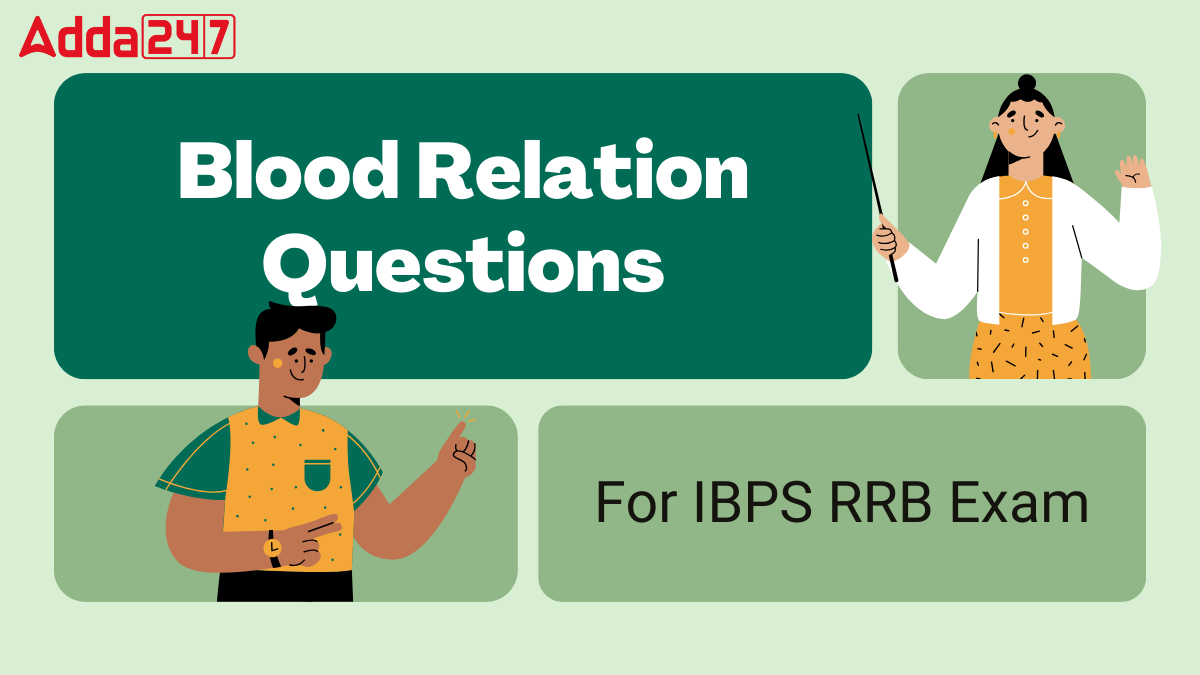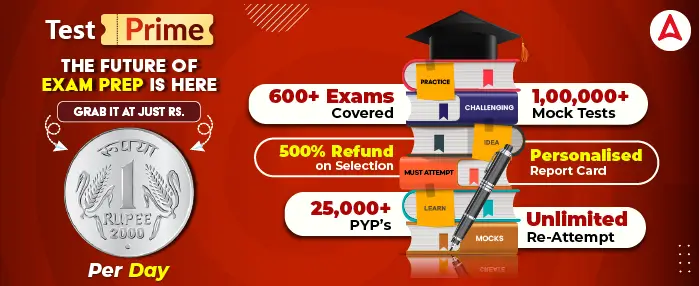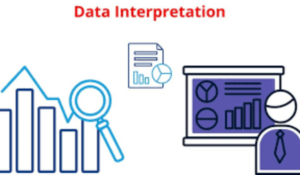Blood relation questions are a common and important part of the reasoning section in many competitive exams, including the IBPS RRB (Institute of Banking Personnel Selection Regional Rural Banks) exam. These questions assess a candidate’s ability to understand and analyze relationships between family members. Mastering blood relation questions can greatly improve your overall score in the reasoning section. Candidates can expect blood relation questions to appear regularly in the reasoning section. To perform well, consistent practice and familiarity with different types of blood relation problems are essential.
Types of Blood Relation Question
Blood relation questions can be broadly classified into the following types:
Direct Relations:
- These questions are straightforward and involve direct relationships like mother, father, brother, sister, etc.
- Example: If A is the father of B, and B is the brother of C, how is A related to C?
Coded Relations:
- In these questions, relationships are represented using symbols.
- Example: If ‘A + B’ means ‘A is the father of B’ and ‘A – B’ means ‘A is the sister of B’, then what does ‘A + B – C’ mean?
Puzzles Relation:
- These questions involve multiple people and relationships, often presented in a puzzle format.
- Example: A family consists of six members P, Q, R, S, T, and U. P is the father of Q, R is the mother of S, T is the brother of P, and U is the daughter of S. How is Q related to S?
Click Here to Download Blood Relations Questions PDF
Blood Relation Questions For the IBPS RRB Exam
1. Pointing to a photograph, a man said, “I have no brother or sister but
that man’s father is my father’s son.” Whose photograph was it?
(a) His own
(b) His son
(c) His father’s
(d) His nephew’s
(e) None of these
2. Pointing towards a boy, Veena said, “He is the son of only son of my grandfather.” How is that boy related to Veena?
(a) Aunt
(b) Uncle
(c) Mother
(d) Data inadequate
(e) None of these
3. Introducing Reena, Monika said, “She is the only daughter of my father’s only daughter.” How is Monika related to Reena?
(a) Aunt
(b) Niece
(c) Cousin
(d) Data inadequate
(e) None of these
4. Pointing to a man a woman said, “His mother is the only daughter of
my mother.” How is the woman related to the mother?
(a) Mother
(b) Daughter
(c) Sister
(d) Grandmother
(e) None of these
5. If X is the brother of the son of Y’s son, how is X related to Y?
(a) Son
(b) Brother
(c) Cousin
(d) Grandson
(e) None of these
6. Pointing towards Rita, Nikhil said.” I am the only son of her mother’s son.” How is Rita related to Nikhil?
(a) Aunt
(b) Niece
(c) Mother
(d) Cousin
(e) None of these
7. Pointing to a lady, a man said,” The son of her only brother is the brother of my wife.” How is the lady related to the man?
(a) Mother’s sister
(b) Grandmother
(c) Mother-in-law
(d) Sister of father-in-law
(e) None of these
8. Pointing to Ketan, Namrata said, “He is the son of my father’s only son.” How is Ketan’s mother related to Namrata?
(a) Daughter
(b) Aunt
(c) Sister
(d) Can’t be determined
(e) None of these
9. Pointing to a man on the stage, Rashi said, “He is the brother of the daughter of the wife of my husband.” How is the man on the stage related to Rashi?
(a) Son
(b) Husband
(c) Cousin
(d) Nephew
(e) None of these
10. A woman introduces a man as the son of the brother of her mother. How is the man related to the woman?
(a) nephew
(b) Son
(c) Cousin
(d) Uncle
(e) None of these
11. Introducing a man, a woman said, “He is the only son of my mother’s mother.” How is the woman related to the man?
(a) Mother
(b) Aunt
(c) Sister
(d) Niece
(e) None of these
12. Looking at a portrait of a man, Harsh said, “His mother is the wife of my father’s son. Brother and sisters I have none.” At whose portrait was Harsh looking?
(a) His son
(b) His cousin
(c) His uncle
(d) His nephew
(e) None of these
13. Pointing to a man in a photograph, Asha said, “His mother’s only daughter is my mother.” How is Asha related to that man?
(a) Nephew
(b) Sister
(c) Wife
(d) Can’t be determined
(e) None of these
14. Introducing a man, a woman said, “His wife is the only daughter of my father.” How is that man related to the woman?
(a) Brother
(b) Father-in-law
(c) Maternal uncle
(d) Husband
(e) None of these
15. Pointing towards a girl in the picture, Sarita said, “She is the mother of Neha whose father is my son.” How is Sarita related to the girl in the picture?
(a) Mother
(b) Aunt
(c) Cousin
(d) Data inadequate
(e) None of these
Directions (16 – 18): Read the following information carefully and answer
the questions given below:
A is the son of B. C, B’s sister, has a son D and a daughter E. F is the maternal uncle of D.
16. How is A related to D?
(a) Cousin
(b) Nephew
(c) Uncle
(d) Brother
(e) None of these
17. How is E related to F?
(a) Sister
(b) Daughter
(c) Niece
(d) Wife
(e) None of these
18. How many nephews does F have?
(a) Nil
(b) One
(c) Two
(d) Three
(e) None of these
Directions (19-20): Read the following information and answer the
questions given below it:
A is the father of C. But C is not his son. E is the daughter of C. F is the spouse of A. B is the brother of C. D is the son of B. G is the spouse of B. H is the father of G.
19. Who is the grandmother of D?
(a) A
(b) C
(c) F
(d) H
(e) None of these
20. Who is the son of F?
(a) B
(b) C
(c) D
(d) E
(e) None of these
Directions (21–22): Read the following information carefully and answer the following questions.
In a family of seven members, T is married to the mother of R. H is the son of T. H is married to K. E is the granddaughter of P. J is uncle of E and is married to R. R has no child.
Q21. Who is married to the father of R?
(a) E
(b) P
(c) K
(d) Cannot be determined
(e) None of these
Q22. Who is the sister-in-law of J?
(a) T
(b) H
(c) P
(d) K
(e) None of these
Directions (23–24): Read the following information carefully and answer the following questions.
There are nine members in the family. T is a female. R is the mother-in-law of K. K is the mother of P and T. U is the maternal uncle of P. H is the brother-in-law of Q, who is married to U. H is the father of P, who is the grandson of G. Y is the father of U. G is a male.
Q23. Who is the husband of R?
(a) G
(b) Father of H
(c) Father-in-law of K
(d) All of these
(e) Both (a) and (c)
Q24. Four of the following five are alike in a certain way based on a group. Which among the following does not belong to that group?
(a) G
(b) H
(c) U
(d) Y
(e) Q
Q25. T and Q are children of S, who is the wife of U. R is married to Q, who has one son and one daughter. If T and R are male members of the family, then how is Q related to the son of T?
(a) Uncle
(b) Aunt
(c) Niece
(d) Grandmother
(e) None of these
Directions (26–27): Study the information carefully and answer the questions given below:
R, S, T, Q, W, P, and O are seven members of a family in which two are married couples. O is the maternal grandfather of W and Q. T is the son-in-law of P who is the mother of S. S is the uncle of Q who is the only son of R. P has only two children and one of them is unmarried. Q and W are siblings.
Q26. How is Q related to T?
(a) Brother
(b) Son
(c) Son-in-law
(d) Father
(e) None of these
Q27. Who among the following is the son of O?
(a) P
(b) Q
(c) Either (a) or (d)
(d) S
(e) None of these
Directions (28-29): Study the following information and answer the given questions.
In a family of eight members, there are equal number of male and female and there are three married couples in the family. E is the grandmother of T and has only two sons. T is the niece of O who is the brother-in-law of X. A is the father-in-law of X and V and has no sibling. I is the uncle of U. T is the single child and has no cousin.
Q28. Who among the following is the husband of X?
(a) I
(b) O
(c) U
(d) Can’t be determined
(e) None of these
Q29. Who among the following is the mother-in-law of V?
(a) E
(b) O
(c) Either (a) or (d)
(d) U
(e) None of these
Directions (30): Study the following information and answer the question given.
There are seven members in a family, and there are two married couples. B is the son of C but C is not the mother of B. A and C are a married couple. E is the brother of C. D is the daughter of A. F is the brother of B. G is the son-in-law of C.
Q30. How is F related to G?
(a) Brother
(b) Brother-in-law
(c) Father-in-law
(d) Uncle
(e) None of these
| Solutions | |||||||||
| 01 | b | 02 | d | 03 | d | 04 | b | 05 | d |
| 06 | a | 07 | d | 08 | d | 09 | a | 10 | c |
| 11 | d | 12 | a | 13 | d | 14 | d | 15 | d |
| 16 | a | 17 | c | 18 | c | 19 | c | 20 | a |
| 21 | e | 22 | d | 23 | e | 24 | e | 25 | a |
| 26 | b | 27 | d | 28 | d | 29 | a | 30 | b |
| Related Posts | |
| IBPS RRB Clerk Cut Off | IBPS RRB PO Cut Off |
| IBPS RRB Clerk Salary | IBPS RRB Preparation Tips |
| IBPS RRB Study Plan | IBPS RRB PO Salary |
| IBPS RRB PO Syllabus | IBPS RRB Clerk Syllabus |




 SBI Clerk 2026 Notification, Exam Date, ...
SBI Clerk 2026 Notification, Exam Date, ...
 Data Interpretation (Line/Bar Graph) for...
Data Interpretation (Line/Bar Graph) for...
 Daily Current Affairs Quiz 2025 15 Decem...
Daily Current Affairs Quiz 2025 15 Decem...







